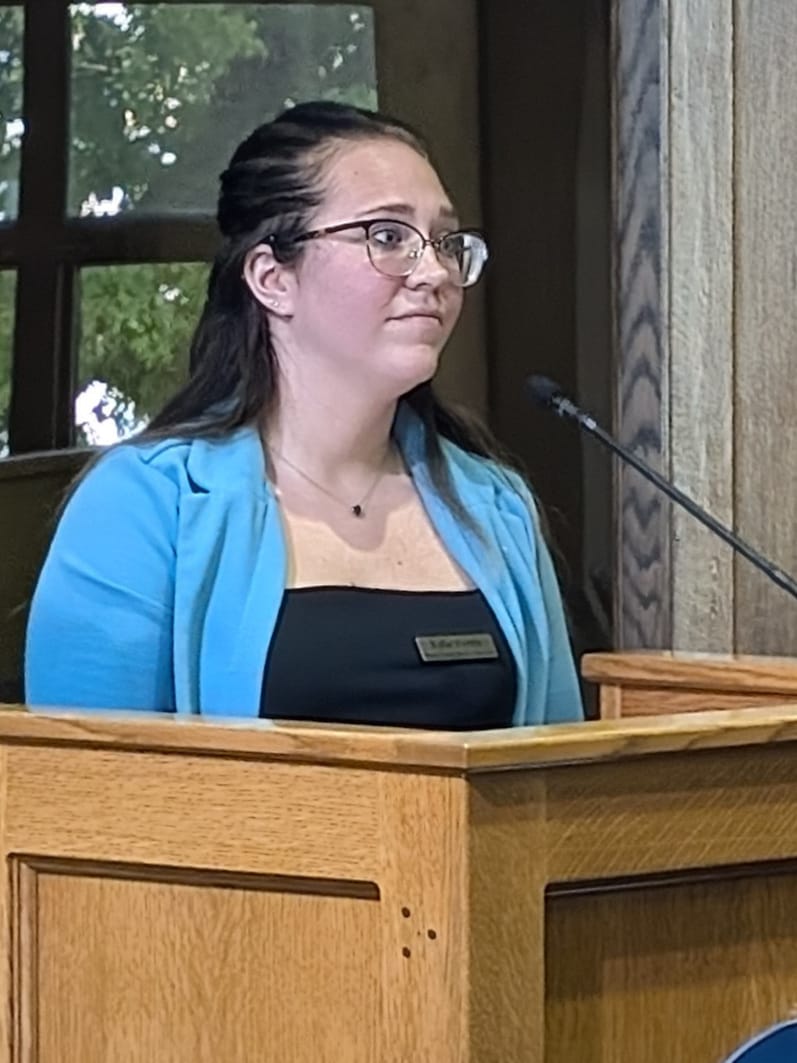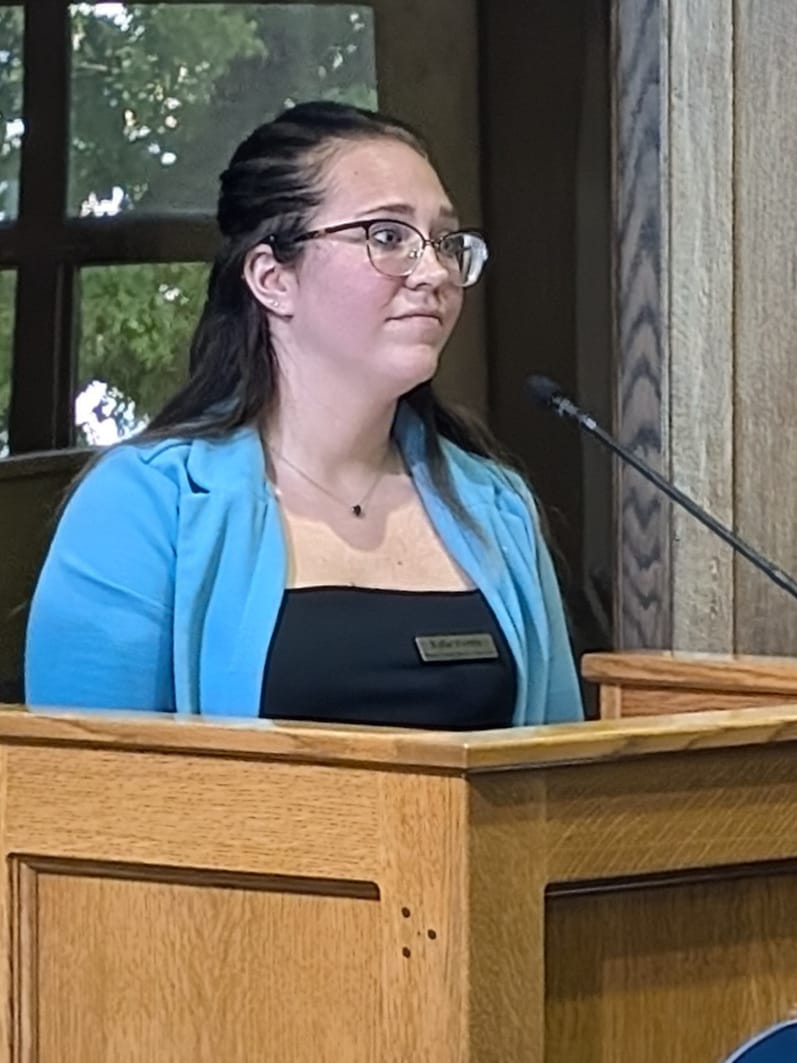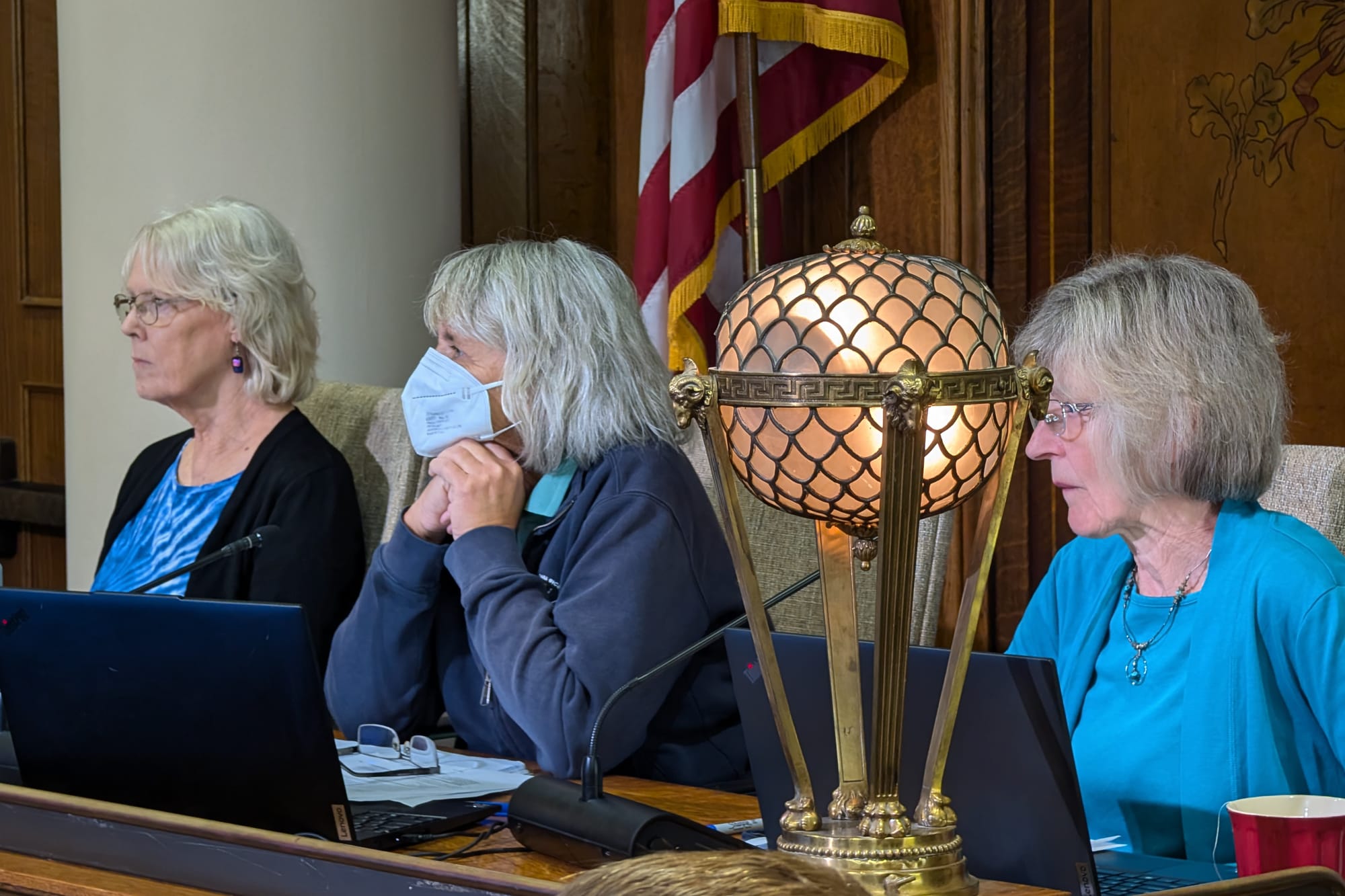Election night results reporting software rejected by Monroe County commissioners



With 39 days left before the Nov. 5 election, it looks likely there will be no change to the way that election night results from Monroe County will be reported to the public.
A contract with An Island LLC, to display results on a website maintained by the Tell City company, was unanimously voted down by the three county commissioners at their Wednesday morning meeting.
The current method of reporting election results to the public is for the elected county clerk, Nicole Browne, to send a message to a list of email addresses, with an attached .pdf report of results. The .pdf report is generated by the Hart InterCivic voting equipment.
News outlets and candidates rely on the emails for the initial unofficial results, before the numbers hit the Indiana Secretary of State’s results website. It’s the county clerk who oversees local elections.
As one reason for denying the contract, commissioners cited the cost, which would have come to $15,000 for the first year and $13,000 for the two subsequent years.
Commissioners pointed to the fact that Monroe County’s GIS division could eventually provide the same functionality, at no cost beyond staff’s efforts, even if it might not be ready in time for this year’s election.
It was Monroe County election supervisor Kylie Farris who presented the request to commissioners at their Wednesday meeting.
Farris indicated to commissioners some clear resistance to the idea of using the county’s own computer network to display election results, based on a lack of confidence in county network security. The lack of confidence is based on a cyber-attack in early July this year that knocked out county government for a week.
Not present at Wednesday’s meeting was Monroe County clerk Nicole Browne. But Browne has also indicated to the B Square that she is skeptical of using the county’s own network to display results, after the July cybersecurity incident.
At Wednesday’s meeting, county commissioner Julie Thomas pointed out that the county’s network and the election equipment are completely separate systems.
But a different concern cited by commissioners was also in some sense security-related—involving the lack of data integrity provisions in the proposed contract with An Island.
Thomas left the door open for a contract with An Island eventually to be approved, telling Farris after the vote: “You’re welcome to bring it back, if you get another contract. And we can have this discussion again.”
From the public mic, it was David Henry, chair of the Monroe County Democratic Party, who raised the concern about data integrity projections in the contract with An Island.
Henry cited his expertise as an IT consultant to the federal government, saying, “I can’t in good conscience support any applications, whether it’s the county’s ArcGIS system or a third-party application being attached to the voter system, that lack a decent data service agreement within that contract.”
Henry said the data service agreement should be independently vetted by experts.
Echoing Henry’s concern about a data protection clause in the contract was William Ellis, who is chair of the Monroe County Republican Party. Ellis indicated that the contract should not be approved until the changes suggested by Henry were made.
Ellis put it like this: “I would recommend approving this contract, once those questions and once the contract has changed to reflect…these data security issues.”
But Thomas analyzed both Ellis and Henry’s comments as opposing approval of the contract. Thomas said, “I think it’s interesting that we have both party leaders locally who say no.” Thomas added, “I think that is probably one of the most unusual things I’ve heard in a while.”
Farris pushed back on Thomas’s characterization, saying, “William Ellis did not say no.” Thomas replied, “He said not now.”
The key ingredient for An Island’s approach is the ability to extract the election results out of the Hart InterCivic equipment as some kind of structured data file—a .csv file or a Excel spreadsheet—that can be imported into another piece of software.
In his comments, Henry noted that such files would be useful for news outlets and political party officials alike and had been requested in the past.
Thomas asked why the election division can’t simply provide a .csv file to the county’s GIS team. The GIS team works out of Trohn Enright-Randolph’s office—he’s the elected surveyor.
About a .csv file, Farris said, “We are not able to generate it on our own. It has to be generated by Hart.” Thomas pushed back: “But if Hart can do it for one company [like An Island], why can’t they do it for the county? Have we asked?”
Farris told Thomas, “I have asked. They are not responding on that comment at this time.”
Farris’s answer elicited an elongated “Wow!” from Thomas. Githens added, “I’m not happy with Hart, then, either.” Thomas added, “That’s very worrisome.”
Added Sept. 30, 2024: Hart Intercivic has described as inaccurate Farris’s characterization of the capabilities of Hart’s equipment and Hart’s communication. Writing to The B Square, Steven Sockwell, who is vice president of corporate development and corporate communications for Hart, said:
• The voting system used by Monroe County does generate .csv files, including detailed vote totals, as part of its basic functionality.
• The .csv file is generated by County Election Office staff and not by Hart. Hart does not have access to the County’s election data, so we couldn’t generate that report on behalf of the County under any circumstances.
• Hart has not been asked by the County GIS office, or the Elections office with reference to the GIS office, about this specific topic (as indicated in your story quoted above) and, if we had, we would have responded with this same information that I’m sharing with you now.
Especially in light of the confirmed capabilities of Hart’s equipment, commissioner Penny Githens said about the potential arrangement with An Island, “There’s just no reason to have a contract.” About the incorrect information provided at Wednesday’s meeting, Githens said, “I don’t know why the clerk [Nicole Browne] has taken the stance she has.”
Githens said that she doesn’t understand why the data has not been provided in .csv format when so many people have asked for it, from news outlets to political parties.
Enright-Randolph weighed in remotely via the Microsoft Teams connection, but was not looking to advocate one way or another. He wanted to establish that his GIS team was available to help.
Enright-Randolph put it like this: “I just wanted to make it very clear that we are here to work in a cooperative effort.” He continued, “I do strongly believe that it is the clerk’s decision as far as which way she wants to move her office.”
Farris said that she and her office “absolutely enjoy” working with Enright-Randolph and pointed to an example of a precinct mapping project to make the maps more easily accessible to voters.
The last day to register to vote in the Nov. 5 election is Oct. 7. Early voting starts on Oct. 8. The early voting location for Monroe County is the election operations building (former NAPA building) at 3rd and Walnut Streets, across from the downtown transit center.




Comments ()